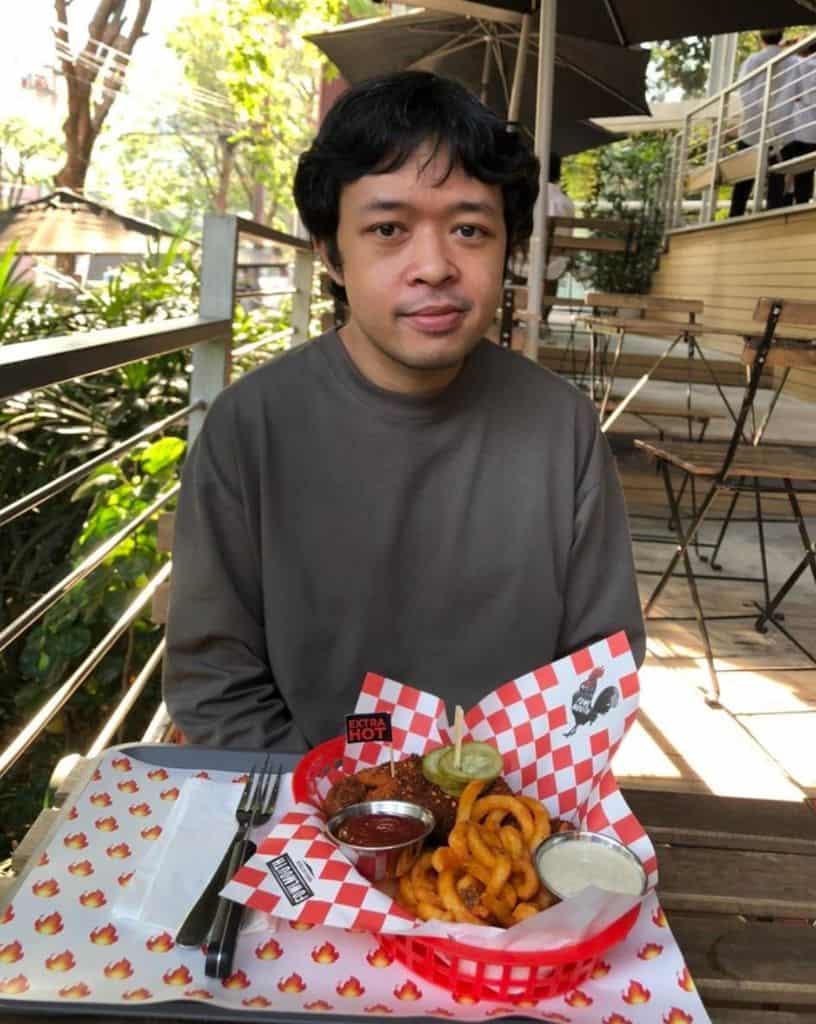“My dog loves spicy food!” You may have exclaimed this while your pup stared longingly at your mouth-burning burrito or hot wings. Dogs cannot actually taste spicy flavors. So why do some canines crave fiery foods that hurt their mouths and upset their tummies?
Capsaicin, the chemical that makes chili peppers hot, does not register on a dog’s limited taste buds. To your pup, that spicy meal just tastes blah or bitter. Yet smells entice them, textures tempt them, and owners eating these foods peaked their interest.
While an occasional spicy nibble likely causes minor stomach upset, regular consumption harms dog health. Spicy foods can irritate dogs’ mouths, cause digestive distress, and prompt dehydration.
This article explores why dogs want foods with no payoff in flavor, how spicy meals impact canine health, warning signs of overindulgence, and tips to keep your pup safe from mouth-burning meals. Discover how you can save your dog from discomfort and enjoy your spicy favorites without sharing.
Do Dogs Enjoy Spicy Flavors?
Dogs lack taste receptors for spiciness. The capsaicin that makes chili peppers hot does not register on canine tongues. To dogs, spicy foods just taste bitter or sour.
Dogs have only 1,700 taste buds, compared to humans’ 9,000. Pups experience a fraction of the nuanced flavors people savor. This limited sense protects dogs from toxic foods. If something tastes bitter, dogs instinctively avoid it.
Spicy foods offer no flavor payoff for pups. Dogs cannot detect the delicious spices humans love. For canines, spicy treats only burn their mouths and upset their stomachs.
Consuming fiery peppers causes dogs to drool, lick their lips, and gag. They may also rub their mouths on surfaces attempting to soothe the irritation.
So while dogs don’t taste spicy flavors, they definitely feel the burn. This painful reaction without any taste payoff makes capsaicin unpleasant and unhealthy for canines. For their safety and comfort, keep your pup far away from mouth-searing spices and peppers.
Can Dogs Taste the “Heat” of Spicy Foods?
When we say a food is “spicy” or “hot,” we’re usually talking about the burning sensation caused by compounds like capsaicin found in peppers. Dogs don’t actually taste the “hot
Yes, dogs can sense the burning feeling from spicy foods, even though they can’t taste the
In fact, the irritation of capsaicin seems more intense for dogs. Since they don’t get any pleasure from the taste, the sensation is purely noxious. Dogs feel the burn more acutely than
Consuming fiery peppers causes dogs to drool, lick their lips, and gag. They may also rub their mouths on surfaces attempting to soothe the irritation.
So while dogs don’t taste spicy flavors, they definitely feel the burn. This painful reaction without any taste payoff makes capsaicin unpleasant and unhealthy for canines. For their safety and comfort, keep your pup far away from mouth-searing spices and peppers.
Can Dogs Build Up a Spice Tolerance?
For people, regularly eating spicy foods can build up a tolerance to the heat, allowing them to handle more potent peppers over time. But for dogs, accumulating
There is not much research on dogs and capsaicin tolerance. But a few factors indicate pups probably can’t acclimate to spicy food irritation:
- Limited taste receptors – With so few taste buds compared to humans, dogs experience less nuanced flavor that might help them adapt to spiciness over time.
- Purely painful reaction – For humans, capsaicin causes both pain and flavor pleasure. But dogs only get the pain, with no reward from taste. There is little motivation to endure the burn.
- Stronger stomach reaction – While people may build up intestinal fortitude, dogs seem to react badly digestively no matter their experience with spicy foods.
- Inherent avoidance – Dogs instinctively avoid bitter foods as potentially harmful. Allowing spicy food exposure seems counter to their evolutionary protections.
While people sometimes indulge in ultra-hot peppers to test their limits, it’s cruel to deliberately expose dogs to painful foods with no compensating flavor. Their health and safety should remain the priority. Stick to gentle, dog-approved flavors.
Why Do Some Dogs Like Spicy Food?
Though spicy foods taste bland to dogs, some still seek them out. A few reasons why include:
- Smells attract them. Dogs depend mainly on their powerful sense of smell. Even if the taste disappoints, spicy food aromas still entice dogs.
- Texture tempts them. Crunchy chips or chewy meats appeal to dogs. They want to sample those mouthfeels, even in spicy foods.
- Owners eat them. Dogs eager to share people food see owners enjoying spicy meals. They want part of that tasty experience.
- Pain doesn’t always deter them. Though spicy foods hurt, some thrill-seeking dogs may enjoy the sensations. Like people eating super-hots, pups may find pleasure in the burn.
Dangers of Spicy Food for Dogs
Though some dogs crave spicy flavors, these foods pose health risks:
- Stomach and mouth pain from capsaicin irritation
- Digestive distress like vomiting, diarrhea, and gas
- Dehydration from fluid loss due to vomiting/diarrhea
- Damage to stomach and intestines from ingredients like onions and garlic
- Anemia or oxygen issues from garlic, onions or even extreme chili heat
Symptoms of a Dog Who Ate Spicy Food
Look for these signs your dog consumed fiery foods:
- Excessive panting
- Drooling and foaming at the mouth
- Lip licking, swallowing, or throat gagging
- Pawing at snout and face
- Watery eyes
- Sneezing or coughing
- Whining/yelping from stomach pain
- Vomiting and/or diarrhea
- Lethargy or weakness from dehydration
Dogs show symptoms within a few hours of ingesting spicy foods. Effects range from mild to dangerous depending on the amount eaten. Immediate action helps manage your dog’s discomfort.
What to Do If Your Dog Eats Something Spicy
Follow these steps if you suspect spicy food consumption:
- Identify the offending food. Details help your vet provide proper treatment. Save packaging or leftovers to ID ingredients.
- Offer bland foods like boiled chicken and rice to calm the stomach.
- Ensure access to water to prevent dehydration from fluids lost vomiting/diarrhea.
- Wipe paws and facial area to remove any lingering pepper oils that could cause skin irritation if touched by paws.
- Watch for signs of distress like face pawing, vomiting, or lethargy.
- Contact your vet. They can provide medications to ease stomach upset and rehydrate your dog if needed.
Preventing Dogs From Eating Spicy Foods
Keep dogs away from tempting spicy treats with these tips:
- Store human foods out of reach, especially anything spicy.
- Never leave food unattended, even for a moment. Close supervision prevents snacking.
- Clean up food scraps immediately after meals. Don’t leave trash accessible.
- If growing peppers, fence off plants. Ingesting peppers right from the source has added risks.
- Teach the “leave it” command. This provides a way to stop spicy food consumption.
- Feed dogs before spicy human meals. Full pups have less craving for forbidden foods.
Beyond Spicy: Other Human Foods Unsafe for Dogs
While spicy foods top the list of avoided human eats for dogs, other people foods also pose risks:
Onions and garlic – Like spicy foods, dishes with these ingredients often tempt dogs with aroma and texture. But they can cause toxic anemia, even in tiny amounts.
Chocolate – Another tempting aroma, but chocolate contains theobromine and caffeine, both toxic for dogs. This includes white chocolate.
Artificial sweeteners – Xylitol is extremely toxic to dogs and promptly causes dangerous blood sugar crashes. This sweetener is found in many candies, gums, and diet foods.
Raisins and grapes – Both contain unknown toxins that can irreversibly damage dogs’ kidneys. Even a few grapes or raisins can be lethal.
Nuts – Macadamia nuts especially are hazardous, causing weakness, vomiting, tremors, and elevated body temperature.
Raw dough – The unbaked yeast and dough conditioners rise dangerously in dogs’ warm digestive systems. This can result in painful bloating and distension.
Salt and seasonings – Excessive salt and spices, even ones considered safe like pepper, overwhelm dogs’ limited taste receptors, causing significant illness.
Bones – Cooked bones easily splinter, perforating dogs’ intestines or causing dangerous obstructions. Even raw marrow bones present choking hazards for aggressive chewers.
For optimal doggie health and safety, stick to bland, boring people food. Share plain cooked meats, rice, boiled veggies, or dog-friendly fruits like bananas, apples, and blueberries in moderation.
The Bottom Line – Can Dogs Eat Spicy Food?
In summary, dogs cannot truly taste the spicy flavors humans savor. But they still seek out mouth-burning foods, tempted by smells, textures, and owners’ preferences.
While an occasional nibble likely causes minor stomach upset at worst, regular spicy food consumption harms dog health. Stick to dog-safe bland diets to keep your pup happy – and your emergency vet bills down.
Sources
- Nationwide: Garlic Toxicity & Pets
- Mi Dog Guide: How do dogs react to spicy food?
- Wag Walking: Can Dogs Feel Heat from Peppers?
- Hepper: Dog Ate Chilli or Spicy Food? Here’s What to Do (Vet Answer)
- Hills: Can My Dog Eat Spicy Food?
- PawTracks: Can Dogs Eat Spicy Food? What You Need To Know
- National Pesticide Information Center: Capsaicin
- American Kennel Club: Can Dogs Taste?





